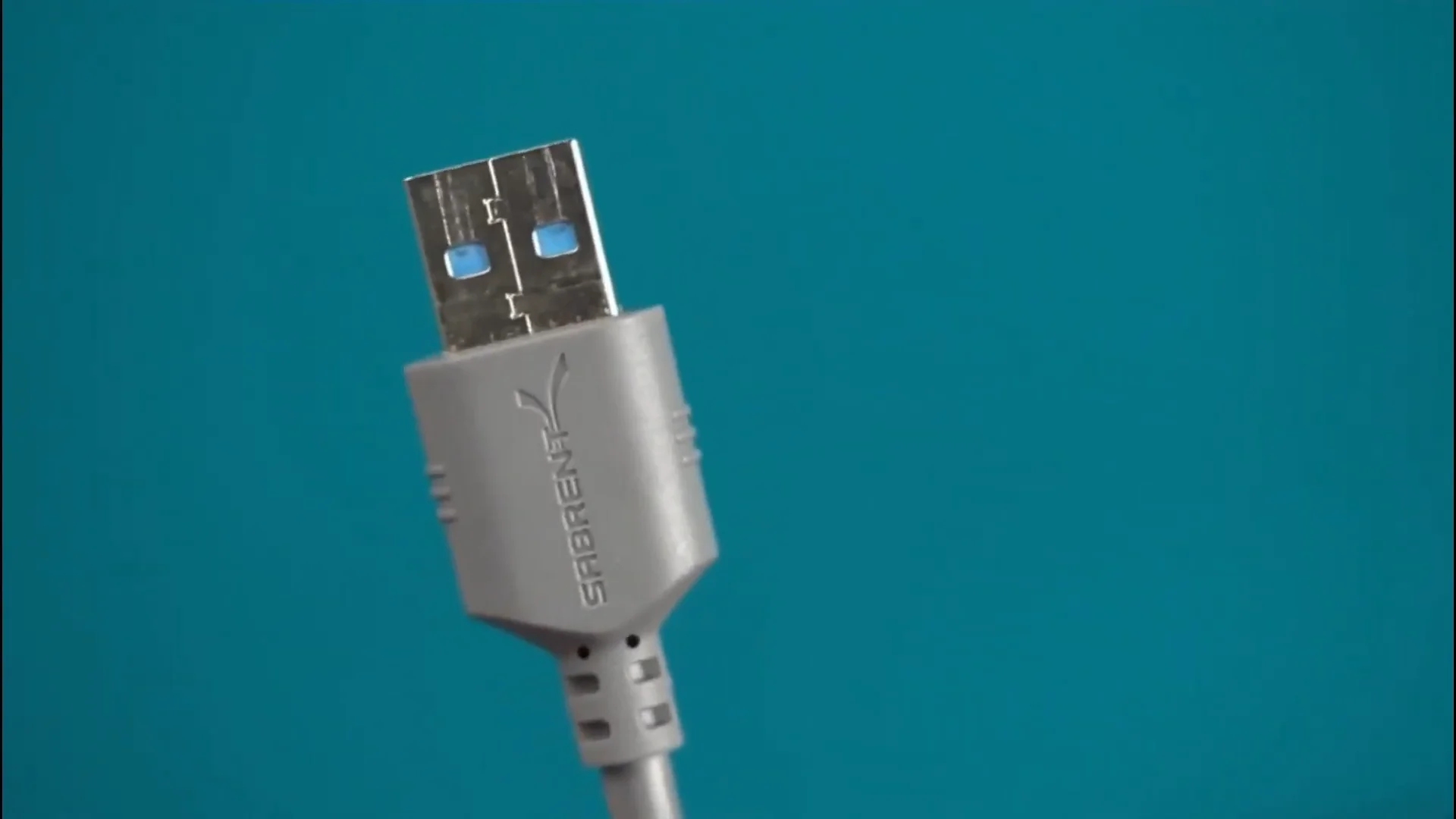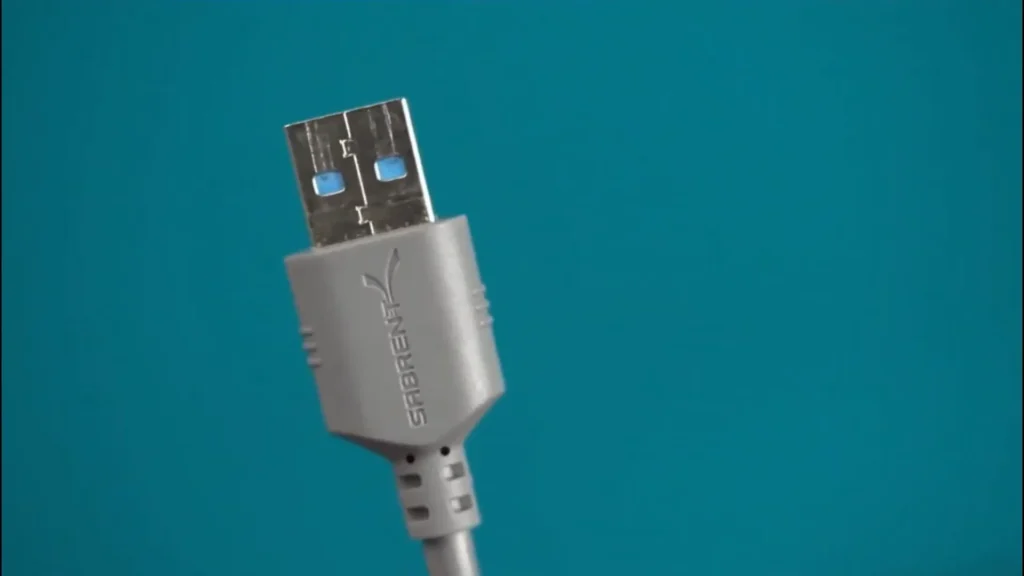
USB4 Version 2.0: Your old USB devices will seem snail-paced once you experience these lightning fast transfer rates! Microsoft recently revealed testing of unprecedented 80Gbps USB4 Version 2.0 speeds that double previous records. But can your device handle it? Let’s break down everything you need to know about this exciting advancement that’s pushing connectivity speeds farther than ever before!
Who Can Unlock These Blazing Transfer Rates of USB4 Version 2.0?
To hit these bleeding edge 80Gbps peaks, you’ll need one key component – an Intel Core 14th generation HX-series processor. These new mobile chips just dropped at CES 2024 in January. So unless you picked one up in the last month, you probably can’t yet push USB speeds into warp drive.
But for those early adopters riding the wave of next-gen silicon, welcome to data transfer nirvana! You’re about to leave older USB standards in a cloud of dust with speeds rivaling the Millennium Falcon punching into hyperspace!
How Fast Are We Talking Here?
Let’s quantify the quantum leap over previous connectivity tech. The new USB4 Version 2.0 specification delivers up to 80 Gigabits per second bandwidth. That’s double the 40 Gbps peak of plain old USB4. In other words…freaking fast!
To visualize streaming at this velocity – you could transfer a full 4K movie in well under 10 seconds! So bid farewell to twiddling your thumbs as progress bars crawl along at a snail’s pace. Near instant data movement has arrived!
But USB4 Version 2.0 does more than crank up current transfer limits. It also cements compatibility with existing USB ecosystems. That means full backward support for peripherals built on prior USB and Thunderbolt specs. So you don’t need to worry about leaving older devices in the dust.
This revised 2.0 standard truly provides the best of both worlds – lightning quick speeds paired with enduring compatibility!
What Spec Devices Can Leverage These New Speeds?
As mentioned up top, tapping into this zippy 80 Gbps potential requires Intel’s latest Core i9 13950HX or 13980HX silicon. These flagship mobile processors represent the pinnacle of performance…for now!
So look for USB4 Version 2.0 compatible devices packing either of those next-gen Intel chips. Though fair warning – with those top-tier components, you’ll pay a premium price for cutting-edge functionality.
However, as adoption spreads in coming months, pricing should moderate to mainstream levels. And USB4 Version 2.0 will make its way into more affordable configurations as the spec disseminates downstream.
For now though, be prepared to shell out for optimal systems like decked out gaming laptops if you want early access to ludicrous speed USB connectivity!
How Will Faster USB Impact Users?

Alright, so USB4 Version 2.0 pushes peak transfer velocities to warp speed levels. No doubt impressive technical wizardry! But how will these hyperspace data rates actually improve real-world usage?
First off, modern workflows lean more heavily than ever on high bandwidth I/O performance for impactful functionality gains. That makes blisteringly quick USB a game changer for many applications.
For example
High-Resolution Media Streaming – Silky smooth playback of 8K or higher video requires substantial bandwidth to avoid choking, stuttering, or compression artifacts. The new 80 Gbps USB pipeline offers plenty of breathing room for max resolution streams.
VR/Metaverse Connectivity – Immersive extended reality workloads demand responsive, low-latency data flows. Again, USB4 Version 2.0’s headroom gives developers flexibility for the next generation of hyper-realistic experiences.
External Storage & Backups – Even high capacity SSD storage can bottleneck on slower interfaces. USB4 Version 2.0 provides enough throughput headroom to unleash the native speeds of cutting edge external drives. Transferring terabytes of data now takes minutes instead of hours!
Of course, for more mundane workloads like web browsing, email, or document editing, you won’t perceive an instant benefit from USB4 Version 2.0’s jackrabbit interface speeds. But future peripheral devices tailored to harness the new spec will deliver far snappier performance than predecessors.
So in essence, think of USB4 Version 2.0 as future-proof infrastructure for the next evolution of bandwidth-hungry USB functionality!
When Will Mainstream Adoption Hit Critical Mass?
USB4 Version 2.0 clearly serves up substantially faster transfer velocities compared to existing USB generations. But as with any new spec, market penetration requires time to reach critical mass.
Intel plans to extend support for USB4 Version 2.0 across all types of upcoming processors including desktop chips. So over the next couple years, the spec should disseminate beyond flagship mobile offerings.
And as production ramps, more computer manufacturers will bake USB4 Version 2.0 into stock configurations rather than limiting support to premium custom builds. So if the spec’s benefits interest you, but current pricing seems prohibitive, just wait a bit longer for mainstream availability to improve.
Likewise, the peripheral ecosystem needs time to catch up too. But with backwards compatibility assurances in place, consumers can rest easy knowing existing USB4 devices won’t become obsolete. Instead vendors can focus efforts on creating next-gen gadgets taking advantage of USB4 Version 2.0 bandwidth.
Final Words
USB4 Version 2.0 heralds a new era of performance for connecting external devices. Doubling peak throughput to 80 Gbps lays the foundation for another generational leap forward in capability. And near term adoption among cutting edge platforms paves the way for eventual mainstream integration.
While current quickest USB4 Version 2.0 implementation requires top-tier Intel Alder Lake silicon, costs will decline over time as support spreads. For now, power users with need for speed stand to benefit tremendously from bleeding edge spec advancements!
But eventually, even casual users will get a taste of next-gen USB4 Version 2.0 goodness as blazing fast peripherals hit the market. Until then, legacy USB still works perfectly fine for most needs. But make no mistake – its days now seem numbered with new 80 Gbps connectivity hurtling onto the scene!
So get ready for another paradigm shift in external interfaces. USB4 Version 2.0 is poised to become the new gold standard for speed freaks and performance purists alike soon enough! The era of lagging data transfers is coming to a close as next-gen USB cranks velocities up to ludicrous speed levels!
Read More :-
